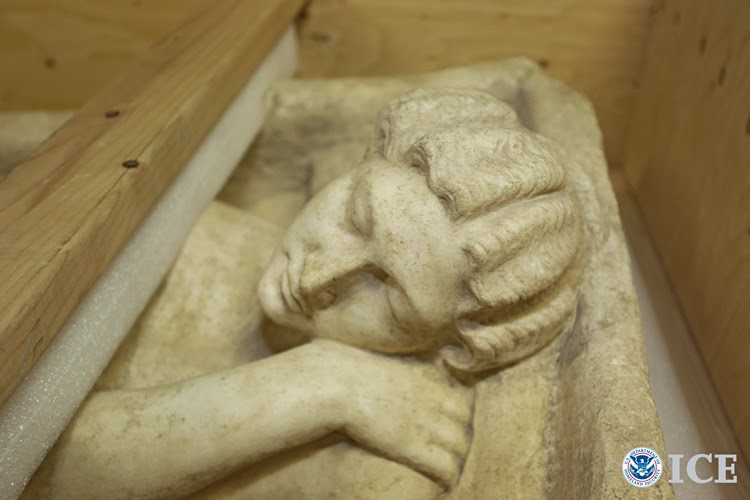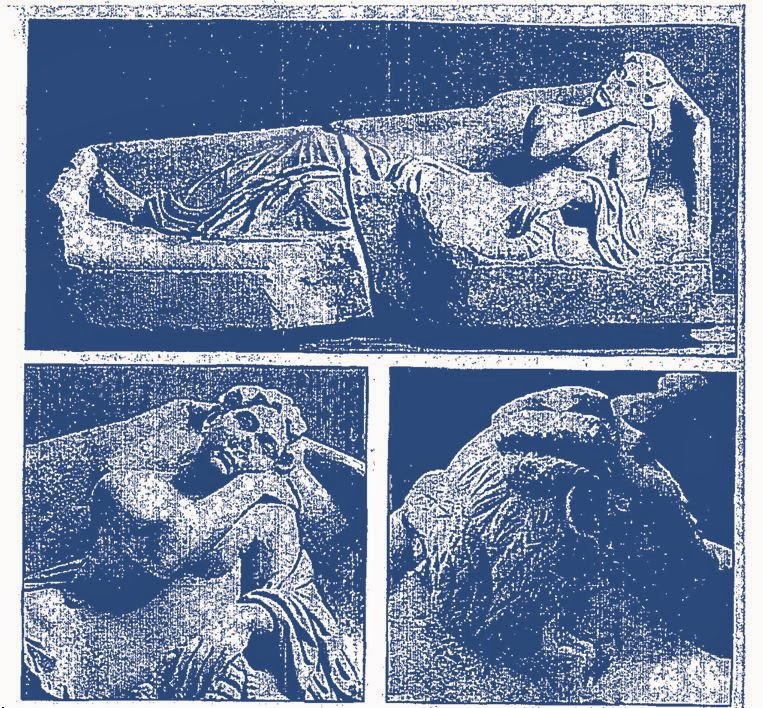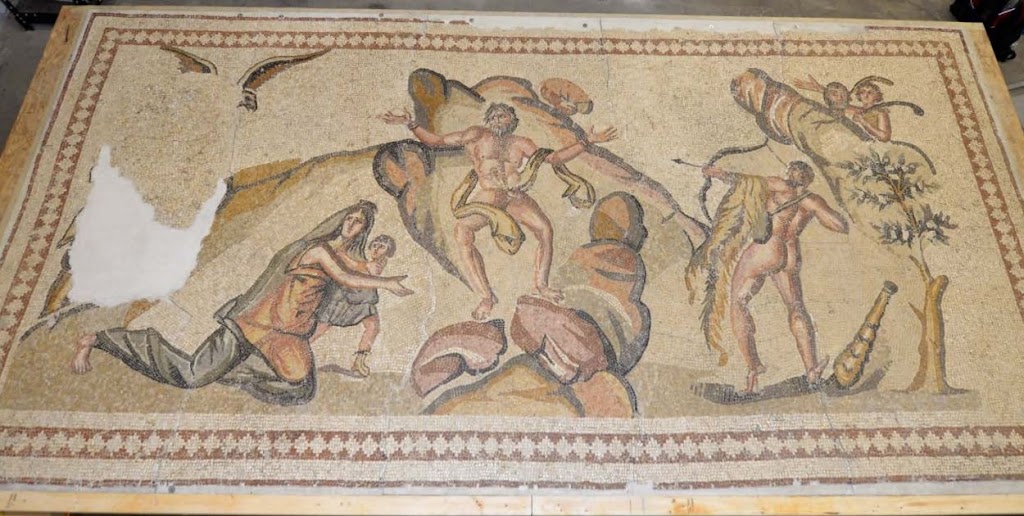U.S. v. One Ancient Roman Sarcophagus Lid: Prosecutors Present Legal Arguments in Support of Forfeiture and Offer Exhibit B
 |
| The Roman sarcophagus lid. Source: ICE |
- the lid was shipped from Italy to Switzerland in 1981;
- a Manhattan gallery displayed the $4 million lid in May 2013;
- the gallery later shipped the lid to a storage unit in Long Island City, NY on October 29, 2013;
- HSI agents photographed the lid in its crate at the storage facility on February 20, 2014 and then presented the photos to the Italian Carabinieri’s Division for the Protection of Cultural Heritage, the “TPC”;
- the TPC identified the lid as cultural property obtained illegally by Gianfranco Becchina, who was convicted in an Italian court of antiquities crimes in February 2011.
 |
| The prosecution’s Exhibit B showing the lid in two parts |
The Becchina archive contains images of the Defendant in rem prior to its restoration and documents relating to the piece, including:
a. A German article about the Defendant in rem, described as a Roman kline statue of a sleeping woman, which included photographs matching the Defendant in rem, including one full-length photograph. See Exhibit B. The article appeared in a catalog that coincided with an exhibition at the Historical Museum of Bern from November 6, 1982 until February 6, 1983. In the photographs, the Defendant in rem appears to be in two pieces and other damage is visible.
b. …
c. A receipt dated August 8, 1981 showing that Palladion purchased the Defendant in rem, describe as a marble Roman sarcophagus in two pieces from Carlo Ciochetti in Rome. Attached to the receipt was a Swiss customs form dated August 14, 1981 bearing the destination “Gianfranco Becchina, Palladion” in Basel, Switzerland.
d. A receipt dated September 15, 1981 showing that Palladion sold the Defendant in rem, described as a marble kline sculpture of a girl, to George Ortiz. Attached to the receipt was a copy of the full-length photograph of the Defendant in rem in Exhibit B.
By Rick St. Hilaire Text copyrighted 2010-2014 by Ricardo A. St. Hilaire, Attorney & Counselor at Law, PLLC. Blog: culturalheritagelawyer.blogspot.com. Any unauthorized reproduction or retransmission of this post is prohibited. CONTACT INFORMATION: www.culturalheritagelawyer.com



